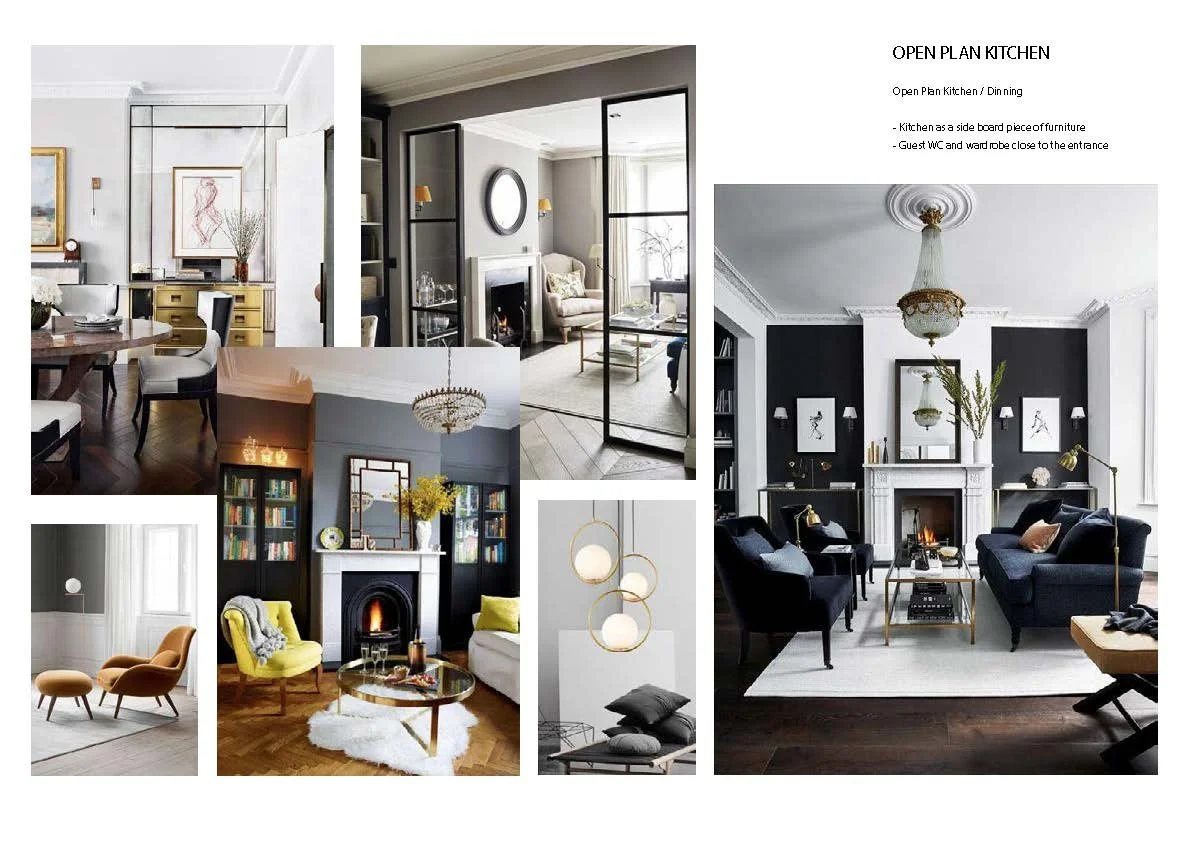10 steps to help you avoid divorce during a construction project
By Kelly Sikkem at Unsplash
Building a dream home is supposed to be one of the most exciting and fulfilling experiences for every family and yet, often, it turns into the worst nightmare ever imagined to be possible. The statistics show that 1 in 10 couples get divorced during or just after the construction project they undertook for their home.
From a professional point of view, these numbers are hugely disappointing, but as architects, we want to create something that improves people's lives in every possible aspect.
From a personal point of view, I find it painful to see so much hope break down and so much pain emerge from initially having a shared vision.
If you are in the midst of construction work on your home or you are thinking of home renovation, this article is for you. Let's dive into the details of where those issues are coming from and how to avoid them.
1. Find your vision.
The first step is to return to your why or vision.
Why did you start or want to start that project?
The answer should be more than just wanting to increase the living space or eliminate clutter.
Ideally, the answer will be anchored in your shared vision as a couple. What do you want to achieve with that project on an emotional level - creating something together, growing closer, feeling safe and secure, and having a place to call home. Something along those lines would be the best motivation and basis for starting work at your house.
Before you speak with your partner about it, you must understand why. Be honest with yourself and establish exactly what your "WHY" is. Once you know the individual vision, you can craft your shared vision for your future home.
While discussing your visions, create a vision board or a list of all those WHYs you collected. This will help you throughout the process.
2. Make it tangible
To do that, you need to answer the WHAT and HOW questions.
What is the improvement you want to do? What do you want it to look like?
What is your vision in terms of materials, lighting and furniture?
All of those ideas should be written down without any edits at first.
There may be images from magazines you'd like to collect to support the list.
You may already have a lovely Pinterest collection of your favourite bedroom arrangements.
This is all great. Share it with your partner and see where they are.
At this stage, you just agree on the big picture. Stay away from details. As long as you can decide on your home's overall look and feel, the details can be discussed and negotiated later.
If you have difficulty agreeing on a style, then this is the time to speak to a professional designer or architect.
Don't try to convince your partner of your style and taste. It is pointless and creates tension and arguments you don't need at the moment.
Speak to a professional; you can appoint them for part of the project. You can ask for their support to help you establish a style that works for both of you.
The investment will be worth it for you to have a blueprint for the whole project and be on the same page.
3. Set a budget.
It's a tricky topic even for partners, so be aware and arrange a time to discuss it.
What do you want to spend? What can you afford?
The answers to both questions can be different. Even if you are fortunate enough to have ample funds, you may still want to keep to a strict budget.
See where your expectations for the budget overlap, and aim to agree on a number that both of you feel comfortable with. Ideally, this number would include the funds you want to spend and allow for some contingency.
If you haven't considered contingency yet, just clarify the ideal budget you could fit your project within and how much more you would be okay spending if things change along the way.
4. Engage Professional.
If you have managed without any outside input until now and you are still having a great time together, now is a good time to engage an architect, interior designer, or both. That depends on the type and complexity of your project.
You may have noticed I didn't say to engage a builder or project manager, and this was intentional. Neither of those professionals—a construction company or a project manager—will be able to bring your visions from your list or mood board to a real-life project. They are amazing for other aspects of your project, but at this stage, you need someone with training, understanding, and a good eye for design, capable of translating ideas into three-dimensional space.
Architects are trained explicitly for that. Some interior designers have that skill, too.
Be picky, and don't shy away from asking uncomfortable questions. Get to know your architect/designer as soon as possible.
5. Play to your strengths.
From here on, the project will naturally develop. Your trusted architect or designer will lead you through the single steps of the process. You will need to make some decisions and confirm choices for the project to move ahead.
While I always recommend keeping everyone in the loop, i.e., all emails go to both partners, and all questions are asked of both partners, I recommend playing to your strengths. You know each other's strengths; use those here.
If your wife works in finance and is skilled at numbers, let her manage the project budget.
If you admire handmade furniture and are obsessed with details, spend time discussing hidden gutters and flushed door details with your architect.
Keep your partner informed and ask for their view of preferences. If it's different from yours, have a chat to get back on track. Keep an eye on the vision board or list to remind both of you why and where you started.
6. Maintain clear communication.
It is always important to remember what clear communication looks like.
That is required for the way you both speak with each other and, equally, for the way you communicate with your design team.
For your communication as a couple, my few top tips would be:
Always speak for yourself. This is the famous use of "I" statements.
Ask your partner what they mean if you need more clarification. Don't make assumptions.
Don't interrupt.
Stay on topic. Resolve one topic before moving to the next one.
If your emotions go high and you are on the brink of a fight, ask for a break and leave the space. Go for a run, walk the dog, sit and meditate—you get the idea. Get yourself in a place of calmness before going back to the conversation.
My advice for communicating with your design team is to be consistent. You might not always succeed, but at least try. Ensure you are on the same page with your partner before sending instructions to the team. Stick to your decision.
The less you change your mind, the quicker the project will be delivered, and the cost will stay at bay.
If you need help deciding, speak to your architect or interior designer. Listen to their advice and clarify what you want before confirming with the design team.
The design team will give you a timeline for each decision you need to make. If you and your partner do your homework and make decisions on time, and both agree, you and your project are set for success.
7. Be flexible.
Things will most likely not go according to plan, and this is how life is. Be mentally prepared that there will be surprises along the way—from missing foundations to slow planning officers or sold-out favourite tiles—all of that and much more is possible and not always predictable or avoidable.
If that happens, then look at what other possibilities and options are out there.
Speak with your architect or interior designer. They will be able to advise you on suitable alternatives. And you never know—you might find something you haven't considered before that you like even better! Stay positive.
8. Take time off from the project - couple time!
By Timo Stern at Unsplash
Maybe you've heard that before and are already implementing it. Maybe you've heard it and think this is nonsense. Love is there, and nothing can strain it.
Well, I don't want to diminish your positivity, but reality sadly shows that too much pressure and stress can kill pretty much every beautiful love story.
Instead of hoping that you will be carried on the wings of Eros through that project, I suggest you put some effort into arranging time away from it so you don't talk about it.
Plan date nights, go for dinner, or enjoy a weekend getaway. Remember that your relationship is more important than this project. Don't leave it to chance; look after it.
Plan for those date nights and put them in the diary. At least once a month, you should get out of the construction bubble and enjoy life and your partner just for the sake of it!
9. Go back to your vision.
Whenever things get challenging, go back to your vision.
For this purpose, it is good to have it written or somehow displayed with images.
Your vision is your inner compass and source of strength.
Reminding yourself of your vision will help you make all the necessary decisions, stay motivated, and be patient.
10. Celebrate successes!
By Krakenimages at Unsplash
Every little win is a reason to celebrate—no matter how small the celebration. Acknowledge that little milestone you have achieved toward your dream home!
Say, thank you to your partner for joining you on that journey. Celebrate with a small treat or a special evening together. This helps maintain morale and reinforces your partnership.
By following these steps, you can navigate the complexities of a construction project while safeguarding your relationship. Prioritise communication, flexibility, and regular quality time to ensure that building your dream home strengthens, rather than strains, your bond.
And for all questions and comments, I am just an email away.






